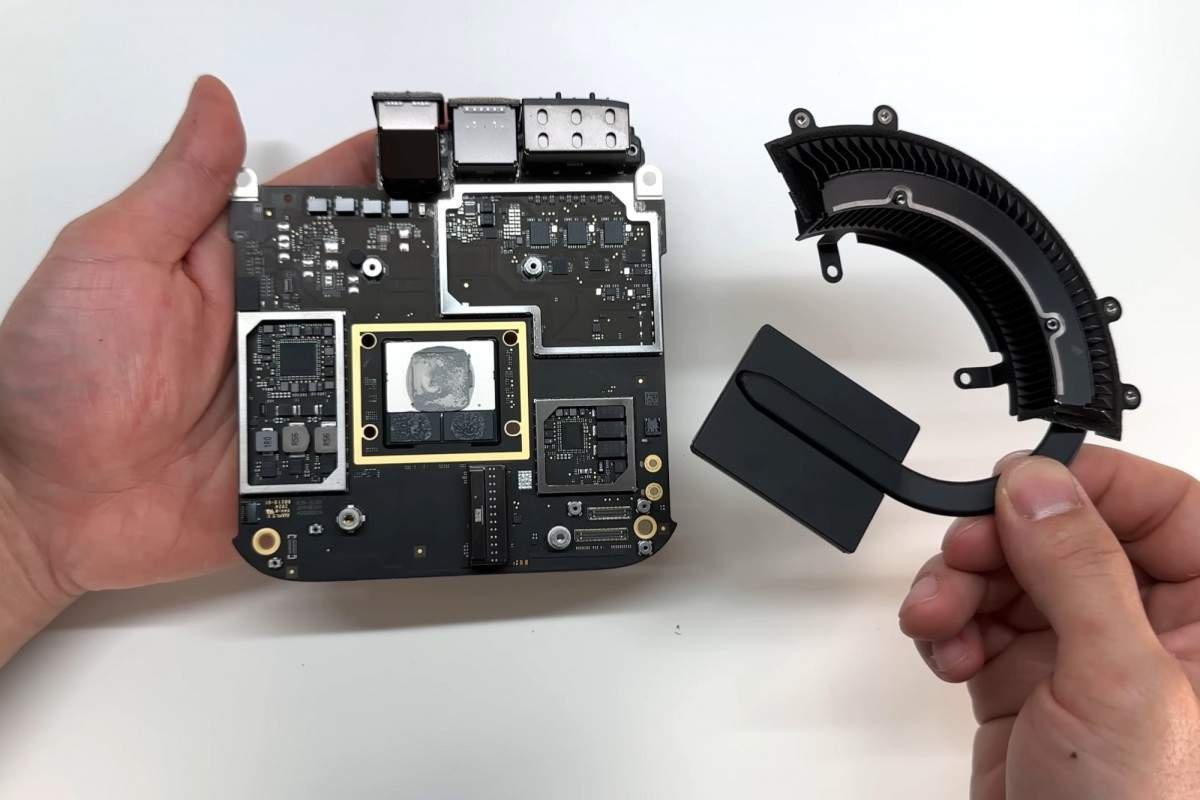Teardown Overview and Initial Findings
The recently launched 2024 Mac mini has already undergone a thorough teardown, providing insights into its internal design and confirming its lack of user upgradeable parts. YouTube creator Brandon Geekabit conducted a detailed review of the base model with 16GB of RAM and 256GB of storage. Accessing the internals follows the same method as previous models, through a plastic panel at the base with no visible screws. This panel can be pried open using a spudger to reveal a metal bracket that holds ventilation openings and a button cell battery responsible for maintaining settings when the device is disconnected. This battery is one of the few easily replaceable components.
The metal grate also functions as a Wi-Fi and Bluetooth antenna and must be disconnected to proceed. Underneath, the cooling system is visible, comprising a centrifugal fan and an arced heatsink with a heat pipe. A small speaker, similar to those in earlier models, is located in a corner.
Internal Components and Storage Limitations
Beneath the fan and speaker lies the motherboard, which holds a significant finding: an SSD that appears standard (M.2 2230) but comes with a proprietary design. Apple’s version has a unique pin count and custom SSD controller, making it incompatible with typical off-the-shelf drives. This means users cannot upgrade the storage themselves after purchase. While some enthusiasts have managed to replace Apple’s memory chips with higher-capacity versions, such methods are complex and come with risks. For most users, external SSDs remain the easiest way to expand storage.
Apple’s decision to limit upgrade options reflects a broader trend seen in recent Mac mini models. Older versions allowed users to replace RAM and storage, while later iterations offered limited upgrade options. The current model reinforces the need to choose the right configuration at the time of purchase.
Power Supply and Cooling Insights
The teardown continued with the internal power supply unit (PSU), which is placed beneath the motherboard. Unlike most micro PCs that use external power bricks, the Mac mini’s PSU is internal, forming the topmost layer when the device is upright. This placement allows the PSU to dissipate heat through the aluminum case, even though it doesn’t receive direct airflow from the fan.
The teardown also uncovered the heatsink covering the M4 chip. Though the heatsink is relatively small, it is sufficient for the M4’s performance, helping the chip maintain higher clock speeds even in warmer conditions. This contrasts with the fanless MacBook Air models, which struggle to sustain peak performance for long periods due to limited cooling.
Final Thoughts on Upgradeability
The teardown concludes that, similar to recent models, the 2024 Mac mini lacks user-upgradeable components. Unlike older versions that allowed RAM and storage upgrades, this model necessitates configuring the desired specifications during purchase. While modifying existing memory chips is possible for some, attaching external storage remains the most straightforward solution.
Despite these limitations, the Mac mini showcases Apple’s dedication to design, with internal components displaying a level of detail and quality rarely seen in standard PC parts.









